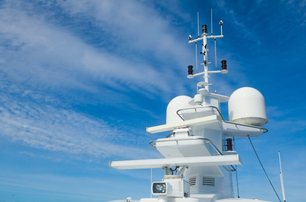Taking a yacht offshore during ownership transfers offers strategic advantages related to legal neutrality, privacy, tax efficiency, flexibility in ownership, and access to a broader international market. However, in each case, the yacht's location must be proven.
This proof is necessary to satisfy legal and contractual requirements and ensure compliance with specific maritime regulations. Here, we explore the steps and methods to verify a yacht's presence in international waters.
International Waters
Beyond the territorial waters of any single country, international waters provide a neutral ground where transactions for yacht sales or transfers can occur under internationally recognized maritime laws.
International waters, also known as 'the high seas', refer to areas of the ocean that are not subject to the jurisdiction of any single country. These waters begin beyond a country’s territorial sea, which extends up to 12nm (22.2km) from its coastline, and are largely out of sight of land.
The freedom and neutrality of international waters simplify the process during the transfer of yacht ownership. In these waters, transactions can occur under internationally recognized maritime laws, independent of any single country's jurisdiction. This environment enhances legal certainty and facilitates smoother transitions of ownership, ensuring compliance with applicable regulations while promoting flexibility for yacht owners and stakeholders.
GPS and AIS Data
The most straightforward way to prove a yacht's location is using the Global Positioning System (GPS). Yachts are equipped with GPS systems that continuously record their coordinates, providing a clear record of their position at any given time.
In addition to GPS, the Automatic Identification System (AIS) transmits a vessel's location, speed, and heading to nearby ships and shore stations. AIS records can be retrieved to demonstrate the yacht's movement and its presence in international waters.
Commercial Satellite Services
Commercial services providing satellite tracking for vessels offer continuous tracking data that can professionally verify a yacht's location. Additionally, systems like Inmarsat and Iridium can effectively log and monitor the yacht's position on a global scale.



Electronic Chart Display and Information System (ECDIS)
ECDIS systems provide real-time navigation information and can log the yacht’s track and position. These logs can be exported and used as proof.
Logbook Entries
While the captain's logbook may not provide the same independent and technical precision as GPS and other electronic systems, it remains a crucial legal document for verifying the yacht's location.
The logbook records voyage details, including departure and arrival times, weather conditions, persons onboard, and the yacht's position. A logbook is widely accepted as valid evidence of the yacht's activity in international waters.
Photographic and Video Evidence
Capturing photos or videos with timestamps showing the yacht's location can provide compelling visual proof. Including geographic coordinates in these images enhances their evidential value.
Additionally, using drones to capture aerial footage of the yacht in international waters offers supplementary visual evidence, further reinforcing its location.
Third-Party Verification
Independent Surveyors
Engaging an independent marine surveyor to verify and document the yacht's location can offer impartial confirmation of its presence in international waters.
Contacting maritime authorities or port officials to verify and document the yacht's departure and arrival times can provide official proof of its movements to a certain extent. While the yacht may not return to the port of departure, a harbor master can track its route via vessel location sites and issue a letter of confirmation.

Legal Documentation and Affidavits
Sworn Statements: Affidavits from the captain, crew, or other witnesses attesting to the yacht’s location in international waters can serve as strong legal evidence.
Notarized Documents: Logbooks, photographs, or other relevant documents can be notarized to enhance their legal authenticity and credibility.
Best Practices for Maintaining Proof
Maintaining proof of a yacht's presence in international waters is essential for legal and regulatory compliance during transactions. Here are some suggested best practices:
Regular Updates: Ensure GPS and AIS data are regularly updated and backed up to prevent data loss and maintain accuracy.
Consistent Log Entries: Maintain detailed and accurate log entries in the captain's logbook, recording voyage specifics like departure times, weather conditions, and the yacht's position.
Secure Documentation: Safeguard all documentation, including photographs, videos, and notarized documents, in secure storage to ensure accessibility and authenticity.
Engage Professionals: Seek advice from maritime lawyers or independent surveyors to verify and present evidence, ensuring compliance with legal standards and enhancing credibility.
These practices safeguard against disputes and support the transparent transfer of yacht ownership in international waters.





